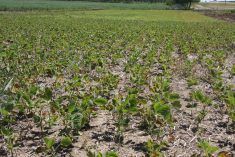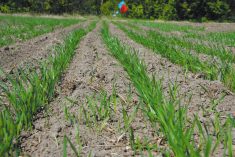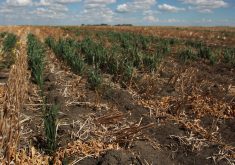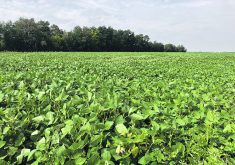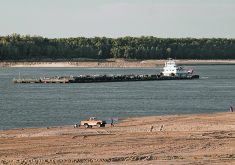Lower yields are likely to continue this year because many crops didn’t get a chance to establish due to dry conditions
The effects of this year’s drought won’t be fully felt by members of the Saskatchewan Forage Seed Development Commission until the next fiscal year, the group recently heard.
But there are reasons to be hopeful of the state of the industry.
“All of us in the business of farming know it was a tough year,” SFSDC chair Spencer Staffen told members during its recent annual general meeting.
“The hard work and perseverance of Saskatchewan forage seed growers and all farmers is something to be proud of.”
Read Also

Trump’s tariffs take their toll on U.S. producers
U.S. farmers say Trump’s tariffs have been devastating for growers in that country.
The export market continues to be solid, members heard.
Year-to-date exports with a quarter still left in the fiscal year show forage seed has already surpassed the 2020 production year, up more than $2 million in value $18.2 million with a half million more kilograms in volume, not including alfalfa.
The widespread tough conditions caused by drought conditions across the western half of the continent also brought with them record high prices for some crops with Saskatchewan yields being average to good.
“Some growers said it was the highest price offered in 40 years,” said Staffen.
Yields will likely not fare so well over the next fiscal year because the impact of 2021 will be felt due to the nature of forage seed production with several varieties not having the opportunity to get established.
“The 2021 crop year was looking good until shortly after seeding time when we started to be a little dry out there and the heat just kept coming,” said SFSDC chair Spencer Staffen. “It’ll be nice to get this in the rear-view mirror.”
Staffen told members SFSDC has rolled back its 2021-22 budget, which is supported by producer levies, by 20 percent in anticipation of poorer production.
There is some optimism looking forward, added Staffen, with good snowfall in the northeastern portion of the province.
As for varieties, timothy hay has moved up to the top spot in value for Saskatchewan grass seed producers in terms of value with annual ryegrass taking second spot in that category with more than twice the amount produced.
Organic varieties continue to punch above their weight, amounting to three percent of the province’s overall forage seed production but ranking at nearly six percent of total value.
The organic side of crop production has also seen a substantial rise from eight growers in 2019-20 to 18 in the past fiscal year.
SFSDC executive director Jo-Anne Relf-Eckstein highlighted the lack of a national forage seed organization to support research but said important work is still being done.
“As I meet the growers and researchers, they share their stories and I’ve come to realize in the last year that forage seed production is an art as much as it is a science,” said Relf-Eckstein. “And that forage seed production in the Carrot River watershed has long been a tried-and-true practice to diversify rotation, spread out workload and it improves our soil.”
Relf-Eckstein said SFSDC plans to develop a strategic plan through consultations with growers over the next fiscal year.




